Abstract
Paediatric orbital subperiosteal abscess (SPA) requires prompt and appropriate treatment to prevent further complication. A 10-year-old girl with a history of sinusitis came with progressive swelling on her left eye, non-axial proptosis and visual acuity (VA) was 2/60. A computed tomography scan revealed a SPA formation in the superior left orbit. This report highlights that intravenous antibiotic with incision and drainage surgery improved the VA with resolution of proptosis and swelling.
Keywords: orbital infection; paediatric subperiosteal abscess; incision and drainage; non-axial proptosis; antibiotic administration.
Introduction
Subperiosteal abscess (SPA), one of the orbital complications of sinusitis, is often associated with either ethmoidal or frontal sinusitis.1 It can rapidly develop into a significant ocular or even life-threatening condition, especially in children.2 The initial treatment of SPA comprises the administration of a systemic antibiotic. Surgical incision and drainage of the SPA is another treatment option. However, previous studies still conflict regarding when to start surgery in the management of paediatric SPA. This case shows the importance of incorporating timely surgical treatment in combination with conservative medical treatment for paediatric SPA management.
Case report
A 10-year-old girl presented to our tertiary hospital with a prominent left eye swelling and pain in the last 3 days. Initially, the swelling appeared subtle, and she had been diagnosed with acute sinusitis the day before. She had taken amoxicillin orally for 4 days. On initial examination, visual acuity (VA) in her left eye was 2/60 with a slightly sluggish pupillary reflex but a negative relative afferent pupillary defect. In addition, she had a non-axial proptosis (Figure 1), restricted ocular movement and high intraocular pressure (38 mmHg). Anterior examination revealed small infiltrates in the superior and inferior part of the cornea, which stained with fluorescein. The posterior segment was unremarkable.
 |
FIGURE 1: There was non-axial proptosis with inferior displacement of the left eye. The eyelid was oedematous and hyperaemic. |
|
Computed tomography (CT) scan revealed acute pansinusitis accompanied by an extraconal SPA formation within the superior part of the left orbit (Figures 2a and 2b). She was admitted and treated with intravenous ceftriaxone and topical antibiotics. However, 72 h following the initial treatment, she showed a clinical deterioration. Her VA dropped to a half metre finger counting; thus, we decided to do urgent surgical drainage of the SPA.
 |
FIGURE 2: (a) Computed tomography scan showing a well-demarcated hypodense lesion in the superior extraconal left orbital cavity (arrow), suggesting a subperiosteal abscess formation; and (b) sagittal view of a computed tomography scan showing that the subperiosteal abscess extended posteriorly to the extraconal retrobulbar space. |
|
In conjunction with the Otorhinolaryngology Department, a surgery comprising lateral orbitotomy, SPA incision and drainage, and functional endoscopic sinus surgery (FESS) of the paranasal sinuses was performed. After the surgery, intravenous ceftriaxone administration was continued, with the addition of intravenous metronidazole and methylprednisolone. Microbiologic culture from the abscess showed the growth of a Streptococcus alpha-hemolytic colony. The intravenous antibiotics were continued for a total of 10 days. At the time of discharge, the proptosis had resolved (Figures 3a and 3b). On the last follow-up, 14 days after the surgical drainage, the VA had improved to 6/30. A residual corneal scar was observed.
 |
FIGURE 3: (a) Frontal view and (b) lateral view at the time of discharge, showing that the eyelid oedema and proptosis of the left eye had resolved. |
|
Discussion
Orbital infections can be categorised into orbital septum, preseptal and post-septal infections. Post-septal infections are almost always an extension of sinusitis.3 Subperiosteal abscess, a type of post-septal infection, is commonly associated with ethmoidal sinusitis when it occurs in the medial orbital compartment. Meanwhile, SPA arising in the superior orbital compartment is often associated with frontal sinusitis.4
Compared to other orbital infections, SPA occurs infrequently. However, it can lead to devastating complications, including Pott’s puffy tumour, blindness and intracranial abscess.5 Nevertheless, there is conflicting evidence regarding the best treatment approach. Garcia and Harris recommended surgical abscess drainage when the patient is older than 9 years, the presence of frontal sinusitis, a large SPA, a suspicion of anaerobic subperiosteal infection and visual disturbance.6 It has been postulated that children older than 9 years have smaller sinus ostia, and this anatomic difference predisposes them to the colonisation of aerobic and anaerobic bacteria when sinusitis occurs. The resulting SPA formation is unlikely to resolve with medical treatment alone.7 Furthermore, immediate surgical drainage has to be done in the presence of frontal sinusitis because of the higher risk of intracranial involvement.6,7
By contrast, Starkey and Stele suggested doing surgical drainage if there is no clinical improvement after 24 h of intravenous antibiotic administration.7 Similarly, Emmett et al. recommended giving medical treatment initially. Surgical drainage could be performed when relative afferent pupillary defect develops, fever does not resolve in 36 h, clinical deterioration occurs after 48 h or no clinical improvement is seen after 72 h.8 In our case, we started with medical treatment because we did not find any indication of intracranial involvement. At the end, when the patient did not demonstrate signs of clinical improvement after 72 h of intravenous antibiotic administration, we proceeded to perform surgical drainage.
The location of the SPA directs the selection of surgical drainage techniques. A medial SPA can be appropriately managed through FESS. In contrast, a superior SPA is inaccessible using FESS. Therefore, a superior SPA should be treated with a combined approach, utilising FESS and external drainage through the supraorbital rim.1 Considering the location of the SPA, we decided to use a combined approach, and it turned out to be successful.
In contrast to surgical treatment, medical treatment should be given initially in any type of SPA. Empiric intravenous antibiotics are beta-lactamase inhibitors, the third generation of cephalosporins and carbapenems, with or without addition of metronidazole or clindamicyn, and it should be initiated as early as possible. A single oral antibiotic of either amoxicillin/clavulanic acid or fluoroquinolone is sufficient to complete the course of antibiotic therapy.9,10 There are various recommendations regarding the duration of antibiotic administration. In general, intravenous antibiotics are given for 4–10 days, and oral antibiotics are given for 7–21 days.6,8,9 In our case, we administered intravenous antibiotics for 10 days. Her SPA was resolved without any recurrence.
In conclusion, the treatment of SPA in children should be initiated with empiric antibiotics. However, a lack of clinical improvement, deteriorating clinical condition and the presence of intracranial complication necessitate urgent surgical drainage.
Acknowledgements
The authors would like to thank Dr Laura Agnestasia Djuanedi for her assistance.
Competing interests
The authors declare that they have no financial or personal relationships that may have inappropriately influenced them in writing this article.
Authors’ contributions
D.E.Y., K.H.K., M.M., L.E. and L.A. contributed equally to the design and implementation of the research, to the analysis of the results and to the writing of the manuscript.
Ethical considerations
This article followed all necessary ethical standards.
Funding information
The authors received no financial support for the research, authorship and/or publication of this article.
Data availability
Data sharing is not applicable to this article.
Disclaimer
The views and opinions expressed in this article are those of the authors and do not necessarily reflect the official policy or position of any affiliated agency of the authors.
References
- Torretta S, Guastella C, Marchisio P, et al. Sinonasal-related orbital infections in children: A clinical and therapeutic overview. J Clin Med. 2019;8(1):101. https://doi.org/10.3390/jcm8010101
- Williams KJ, Allen RC. Paediatric orbital and periorbital infections. Curr Opin Ophthalmol. 2019;30(5):349–355. https://doi.org/10.1097/ICU.0000000000000589
- Wong SJ, Levi J. Management of pediatric orbital cellulitis: A systematic review. Int J Pediatr Otorhinolaryngol. 2018;110:123–129. https://doi.org/10.1016/j.ijporl.2018.05.006
- Taubenslag KJ, Chelnis JG, Mawn LA. Management of frontal sinusitis-associated subperiosteal abscess in children less than 9 years of age. J Am Assoc Pediatr Ophthalmol Strabismus. 2016;20(6):527–531.e1. https://doi.org/10.1016/j.jaapos.2016.08.007
- Najarian C, Brown A-M. What is the best treatment for a subperiosteal abscess? A case report in a pediatric patient. J Pediatr Health Care. 2019;33(4):489–493. https://doi.org/10.1016/j.pedhc.2019.01.003
- Garcia GH, Harris GJ. Criteria for nonsurgical management of subperiosteal abscess of the orbit: Analysis of outcomes 1988–1998. Ophthalmology. 2000;107(8):1454–1458. https://doi.org/10.1016/S0161-6420(00)00242-6
- Todman MS, Enzer YR. Medical management versus surgical intervention of pediatric orbital cellulitis: The importance of subperiosteal abscess volume as a new criterion. Ophthalmic Plast Reconstr Surg. 2011;27(4):255–259. https://doi.org/10.1097/IOP.0b013e3182082b17
- Emmett Hurley P, Harris GJ. Subperiosteal abscess of the orbit: Duration of intravenous antibiotic therapy in nonsurgical cases. Ophthalmic Plast Reconstr Surg. 2012;28(1):22–26. https://doi.org/10.1097/IOP.0b013e31822ddddc
- Brook I. Microbiology and choice of antimicrobial therapy for acute sinusitis complicated by subperiosteal abscess in children. Int J Pediatr Otorhinolaryngol. 2016;84:21–26. https://doi.org/10.1016/j.ijporl.2016.02.022
- Sciarretta V, Demattè M, Farneti P, et al. Management of orbital cellulitis and subperiosteal orbital abscess in pediatric patients: A ten-year review. Int J Pediatr Otorhinolaryngol. 2017;96:72–76. https://doi.org/10.1016/j.ijporl.2017.02.031
|